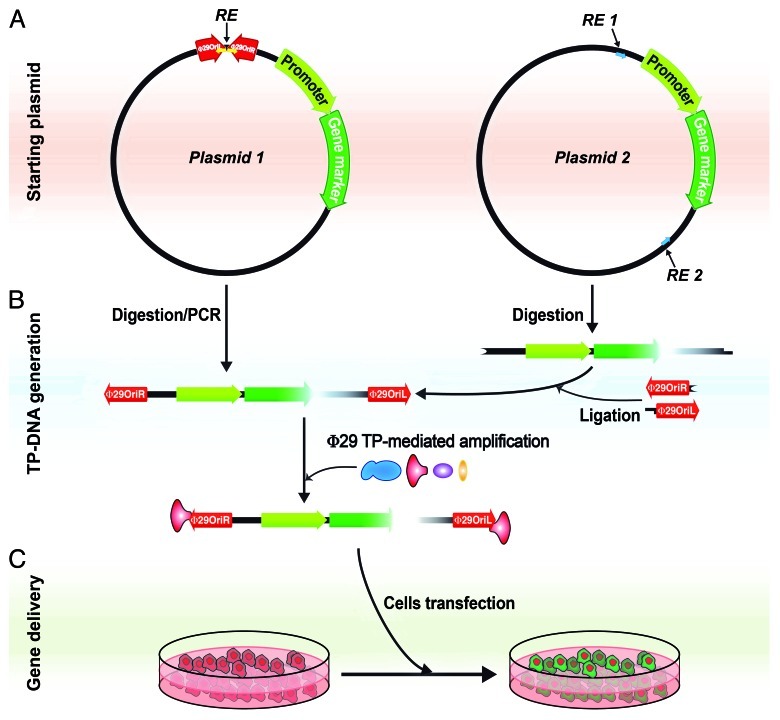Figure 1. Generation of Φ29 TP-linked DNAs for enhanced gene delivery. (A) Starting plasmid. The transfected DNA should contain a gene marker under a suitable promoter for expression in mammalian cells. In Plasmid 1 (on the left), the Φ29 genome replication origins have been cloned into the plasmid, which allows the generation of linear DNA by cleavage with the appropriate restriction endonuclease (RE) or by PCR amplification with specific primers. Alternatively (on the right), Φ29 replication origins may be linked as specific adapters using incompatible restriction enzyme sites (RE 1 and RE 2). In the latter case, the digested linear DNA fragment may be originated either from an expression plasmid13 or a PCR-generated fragment containing the same restriction sites. Yellow and blue arrows stand for the specific PCR primers in each case. (B) TP-DNA generation. Linear DNAs containing Φ29 replication origins at both ends can be amplified with the addition of four Φ29 DNA replication proteins, DNA polymerase (blue), TP (red), double-stranded DNA binding protein (purple) and single-stranded DNA binding protein (yellow). (C) Gene delivery. The amplification mixture can be directly used for gene delivery experiments, like cell transfection. Evaluation of the gene marker expression should be checked by western blot or suitable activity assays.

An official website of the United States government
Here's how you know
Official websites use .gov
A
.gov website belongs to an official
government organization in the United States.
Secure .gov websites use HTTPS
A lock (
) or https:// means you've safely
connected to the .gov website. Share sensitive
information only on official, secure websites.
